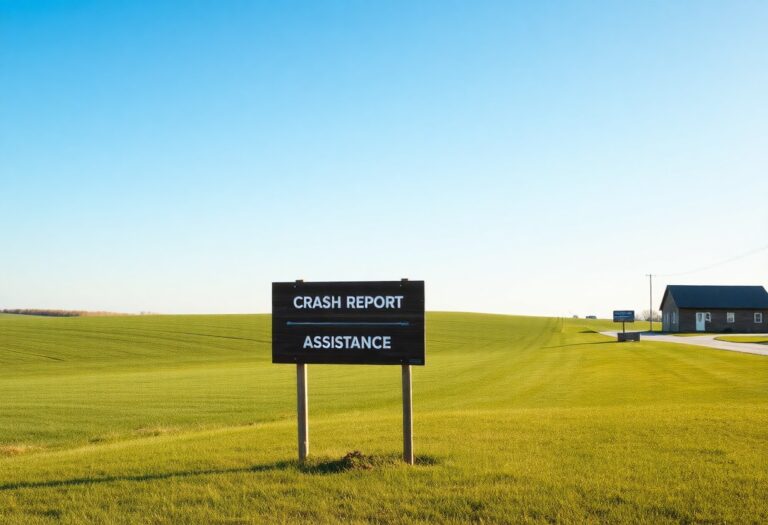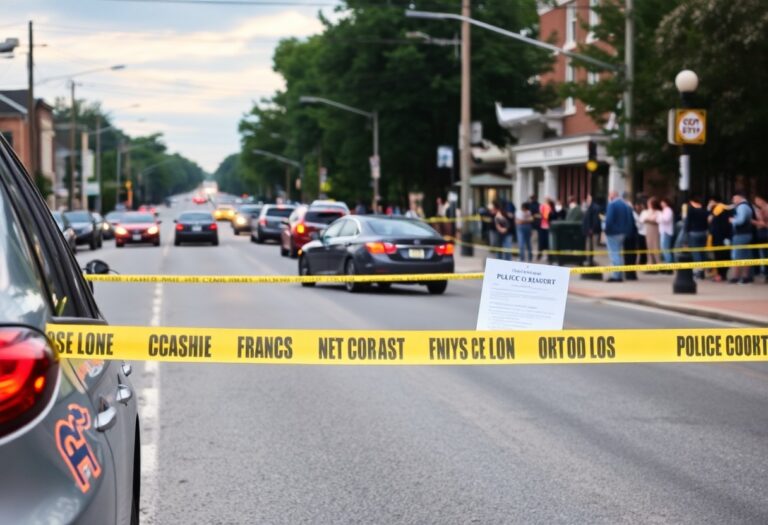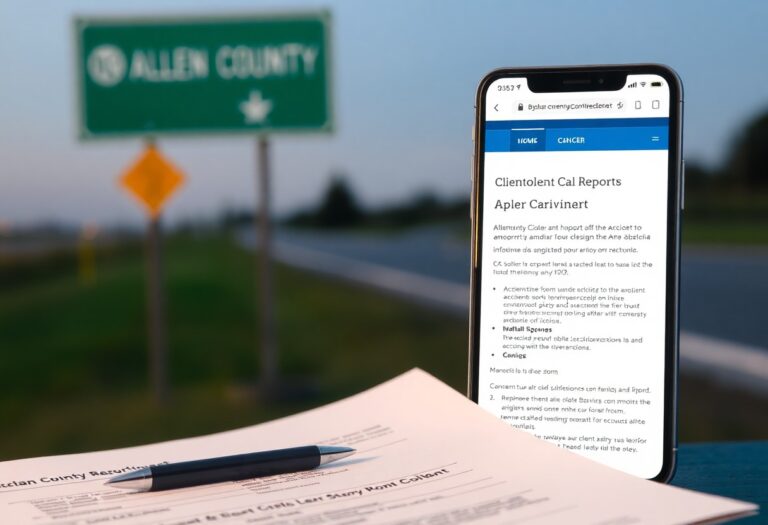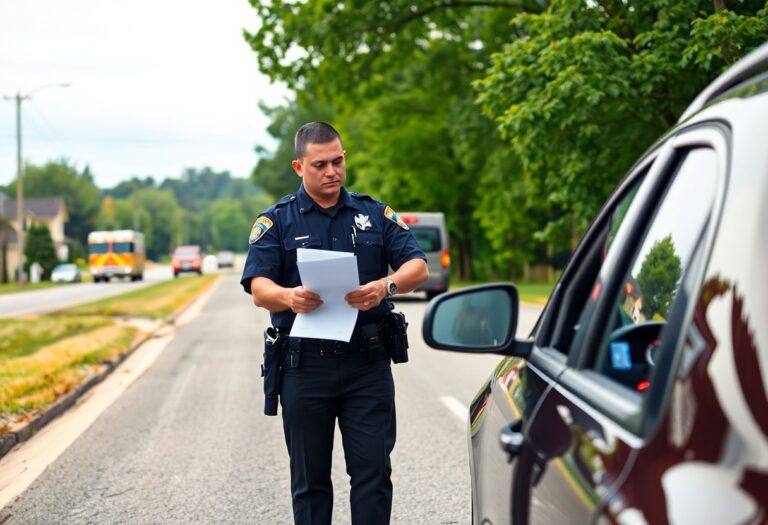Many drivers in Faulkner County, Arkansas, may find themselves navigating the complexities of the car accident report process after an unexpected incident. Understanding how to properly document the details of your accident can not only streamline your insurance claims but also protect your legal rights. In this guide, we will walk you through the important steps, from collecting evidence at the scene to filing the report with the appropriate authorities. This information is designed to empower you to tackle this challenging situation effectively and confidently.
Navigating the Initial Chaos of a Car Accident
Experiencing a car accident can throw you into a whirlwind of confusion and panic. In those shocking moments, staying composed can be incredibly challenging, but it’s vital to know what steps to take to protect yourself and your interests moving forward.
Understanding Immediate Actions to Take at the Scene
First, prioritize safety. Move your vehicle to a safe location if possible and turn on your hazard lights. Check for injuries among yourself and passengers, and call 911 if medical attention is needed. Maintain a calm demeanor, as this will help you think clearly and gather important information.
Important Information to Collect from Other Parties
Collecting detailed information from others involved is vital for documentation and future claims. Gather names, contact information, insurance details, and vehicle descriptions. Make sure to note down license plate numbers, as well as the make, model, and year of all vehicles involved.
Each piece of information can significantly impact your ability to file claims and assert liability. Make a note of the time and location of the incident, and if there are witnesses, gather their contact information as well. Having everything documented can streamline your claim process and strengthen your position in any potential disputes. Use your smartphone to take pictures of the scene, vehicle damages, and any visible injuries, as visual evidence often makes a crucial difference. Do not forget, the more thorough your documentation, the smoother the resolution will be.
The Essential Role of Police Reports in Your Case
Police reports serve as a foundational document in the aftermath of a car accident, providing an objective account of the incident. This record typically includes pertinent details such as the location, time, conditions, and parties involved. In many cases, it captures eyewitness statements and contributing factors, making it a vital component of your claim. You’ll find that the official nature of these reports lends greater credibility to your case, especially when dealing with insurance companies or legal proceedings.
Why Police Reports Matter in Insurance Claims
Insurance companies heavily rely on police reports to assess liability and determine the outcome of your claim. These reports often contain an officer’s assessment of fault, which can significantly influence the insurer’s decision-making process. If the report indicates that you were not at fault, it strengthens your claim and can lead to more favorable compensation outcomes. Conversely, if the report suggests shared or complete fault, it may complicate your case, making it imperative to understand its contents.
How to Obtain Your Accident Report
Obtaining your accident report typically involves making a request to the police department that responded to the scene. In most cases, you’ll need to provide imperative details such as the date of the accident, location, and your personal information. Some departments may allow you to request reports online, while others may require you to visit in person or submit a written request. Be prepared to pay a nominal fee for the report, which varies by jurisdiction.
To streamline the process of obtaining your accident report, consider checking the website of the responding police department. Many agencies provide online portals where you can search for and request your report by entering the required information. Alternatively, do not hesitate to call the department for guidance on their specific protocols. Typically, reports are available within a few days to weeks post-accident, but this can vary. Staying persistent and organized can ensure you receive your report promptly, enabling you to move forward with your claim effectively.
Decoding the Language of Accident Reports
Understanding the intricacies of accident reports is vital for your case. The language used can seem daunting, filled with abbreviations, technical terms, and legal jargon. Familiarizing yourself with these terms and their implications can empower you in assessing the report’s content and effectively communicating with insurance companies or legal representation. Whether it’s your first experience with such documents or a refresher needed after an incident, we’ll break things down so that navigating these reports becomes a simpler task for you.
Common Terminology and Their Implications
Accident reports contain specific terms that convey significant information about the incident. For example, phrases like “fault” indicate who was responsible, while “impact velocity” refers to the crash’s speed impact, which affects damage assessment. Understanding these terms allows you to gauge the report’s implications on liability and potential compensation. Misinterpreting them could lead to misunderstandings in negotiations, emphasizing the need for clarity on each term used.
Identifying Key Sections of the Report
Each accident report is typically divided into several key sections that include details about the incident, witness statements, and officer observations. The narrative section is particularly valuable, as it provides a description of the accident from the officer’s perspective, detailing the sequence of events and contributing factors. Additionally, diagrams illustrating vehicle positions can give you a visual context for understanding how the accident unfolded. Recognizing and analyzing these sections enables you to extract pertinent information that could impact your case positively.
Pay close attention to the diagram, as it visually represents the crash scene, providing crucial insights into how the accident occurred. The witness statements, if included, can offer independent perspectives that bolster your account of the accident. Also, ensure to review any citations or violations listed under the report’s findings, as these can directly influence liability decisions. By pinpointing these sections, you strengthen your ability to communicate effectively and navigate the outcomes related to your accident.
Addressing Discrepancies: What to Do If You Disagree with the Report
Disagreements with the tow report can arise, especially if you believe the information is inaccurate or biased. You have the right to seek corrections, which could significantly impact your case. It’s important to act swiftly, as the window for addressing discrepancies is often limited. By being proactive, you can ensure that your perspective is reflected in the official record, which could influence insurance claims or legal proceedings.
Steps to Challenge Inaccurate Information
If you identify inaccuracies in your accident report, you should first collect evidence supporting your claim. This could include photos from the scene, diagrams, or any relevant documents. Next, contact the police department that filed the report, request clarification, and submit your evidence. You may also consider filing a formal statement or a request for amendment, which allows you to present your side directly to the authorities involved.
The Role of Witness Statements in Supporting Your Case
Witness statements can provide invaluable support in your efforts to correct any inaccuracies in your accident report. Eyewitness accounts may corroborate your version of events, offering additional credibility to your claims. A detailed statement can reinforce discrepancies, compelling authorities to reconsider the original report.
Witnesses can offer insights that shaped the circumstances of the accident, including details about the weather, visibility, and any unusual driver behaviors. Collect their contact information immediately and ask them to provide written statements if possible. If they are willing to testify, their testimony may strengthen your position when challenging the police report. Additionally, multiple witness statements can create a stronger case, increasing the likelihood of addressing errors effectively.
From Report to Resolution: Your Path to Insurance Claims
Navigating the insurance claims process after a car accident can feel overwhelming, but understanding the steps involved can streamline your recovery. After obtaining your accident report, you’ll initiate a claim with your insurance company or the at-fault party’s insurer. This claim should include important details from the report, photographs of the scene, witness statements, and any medical documents pertinent to your injuries. Having organized documentation can help ensure a smoother resolution and expedite any compensation owed to you.
Filing Claims After an Accident Report is Filed
Once your accident report is generated, the next step involves filing your insurance claim. Submit the report to your insurer along with any other relevant evidence, such as medical bills, repair estimates, or records of lost wages. The insurance company will review all files submitted, investigate the details of the accident, and assess liability. Keeping a thorough record of all communications can aid in ensuring your claim is processed efficiently.
Understanding the Timeline and What to Expect
The timeline for processing an insurance claim can vary significantly based on the complexity of the case and the responsiveness of involved parties. Generally, expect a response from the insurer within a few days after submission. Typically, a full resolution of the claim may take several weeks to months, particularly if negotiations are necessary for settlement. Understanding that delays can occur due to factors like obtaining medical records or estimates is important. Staying proactive in communication and following up can help minimize wait times and facilitate a smoother claims journey.
To wrap up
So, as you navigate the car accident report process in Faulkner County, Arkansas, you can rely on our guidance to help you understand your rights and responsibilities. Whether you’re dealing with insurance claims or gathering necessary documentation, knowing the steps to take can make a significant difference in achieving a favorable outcome. With accurate information and support, you’re better equipped to handle the aftermath of an accident confidently. Make sure to stay informed, and you’ll be well on your way to resolving your situation effectively.













